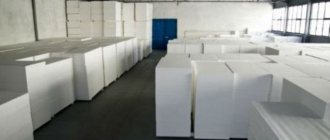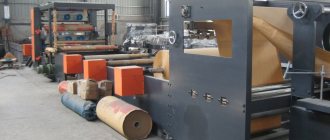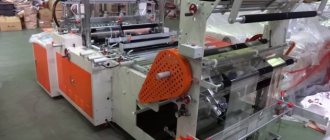Opening a department selling packaged honey does not require large investments. Trade equipment can be purchased second-hand, and products for sale can be purchased in installments from local beekeepers. In most cases, to open a store it is enough to rent a corner of 10-15 square meters. meters in a shopping center or on the ground floor of an apartment building. The second option is even more preferable, since clients will be, as they say, “nearby”...
About the “honey business”
The retail honey market is currently quite developed, but the opening of new sales points continues. Basically, packaged honey is purchased in retail chains. But its range in such objects leaves much to be desired. Plus, retail chains are unlikely to provide advice on the varieties and types of this product, and this is very important for the buyer.
These two facts create a certain niche for opening a specialized department for the sale of packaged honey. This point of sale has several advantages that will be easily appreciated by true connoisseurs of a useful product.
Firstly, in a specialized retail store the range of honey and other products is much larger. Here you can sell a lot of related products: bee products (wax, propolis, royal jelly, beebread, pollen), health products, tea, medicinal herbs, gift sets.
Secondly, such departments, as a rule, employ a person who understands the types of honey and its beneficial properties. After all, often, when a buyer comes to a store, he does not know what variety and taste he will like. But no problem - tasting is open for him, try and buy whatever your heart desires. You won't find this in a supermarket, that's for sure.
It is for these reasons that a specialized store selling honey and related products will always be in demand. Any city, from small to large, will form its own client base.
How to start a business opening a department selling packaged honey
A businessman who decides to open such a business needs to resolve several issues. First you need to decide where to get honey from and how to create the right range of products. There are several options.
First option: You can buy honey in bulk from local beekeepers and package it yourself in plastic or glass containers. The advantage of such activity is that you can get more profit due to a higher markup (up to 100-150%).
However, there is also a significant disadvantage - packaging requires the purchase of appropriate equipment (UD-2 dosing unit), a separate room and the hiring of labor. In other words, you are forced to open a full-fledged production, with all that it implies.
An easier way is to purchase ready-made, packaged honey from wholesalers, of which there are quite a few in our country. You can even agree on such conditions that they themselves will bring the goods to your outlet. Hence, there are no transportation costs. You will earn less (maximum 50% markup), but there will be significantly less hassle.
Basic production technologies
Before sale, honey is processed using a special technological process in order to preserve its healing and organoleptic properties. Beekeepers have developed 2 ways to obtain beekeeping products.
The first and most popular item is the printing of honeycombs for sale. Cell honey contains the maximum amount of vitamins, amino acids, enzymes and other valuable biologically active substances. To print the cells, remove the bar. To do this, the wax caps are cut off or knocked down. White comb honey is cut into pieces and packaged in sterile containers (glass jars, plastic packaging).
We recommend reading: What is the best way to recycle a Christmas tree?
The production of cream honey is considered more expensive, but no less popular for sale.
Its production technology is based on different methods:
- Mechanical stirring or beating until natural crystallization, as a result of which the product does not become sugared. The method was patented in 1935 by the American El. J. Dice and is based on the destruction of the structure of sugar crystals, which are not able to recover.
- Mixing the starter in recrystallizers. The finally crushed crystals are mixed with liquid honey and stirred gently for a week at a given temperature, which produces a silky honey mass.
How much money do you need to start a business selling packaged honey?
As for the total costs of starting a business, they can range from 300 thousand rubles, depending on the scale of the project. It is logical that the larger the sales department, the more funds are needed for its arrangement.
The purchase of retail equipment will cost at least 100 thousand rubles, the creation of an assortment of goods - from 150 thousand rubles, advertising (signboard in front of the entrance) - from 30 thousand rubles, other organizational expenses. expenses – another 20 thousand rubles.
When purchasing goods, you should definitely check with the supplier for the availability of an apiary passport and a veterinary certificate for the batch of honey. This is necessary in order to avoid problems with regulatory authorities in the future.
The most important task of the business organizer is to find good sellers, real experts in the honey business. Often, the size of the store’s revenue and the success of the entire business depend on the skill of your sellers.
The person behind the counter must understand the types of honey, be able to offer the right product to the buyer, explain its healing properties and rules of use. In addition, he must have good human qualities, be polite and responsive.
Finally, the seller must be able to sell the product, no matter how trivial it may sound. If a buyer, having come for one jar of honey, takes two more with him, and also bought a set of Indian tea just in case, you have found the ideal employee.
How much can you earn from a honey selling point?
When talking about how much you can earn from the retail sale of honey, you need to calculate turnover.
In total, one bee colony can produce an average of 40-50 kilograms of honey per season. Taking into account the current market price of 300 rubles per kilogram, we can conclude that one family can earn 12-15 thousand rubles per season. Then from one apiary you can get about 400,000-500,000 rubles. You can also introduce the sale of beekeeping by-products (pollen, wax, propolis).
From their sale you can get an average of 120-150 thousand rubles. If the development of the apiary proceeds at a normal pace, then subsequently the number of bee colonies will only increase, which will give impetus to an increase in profits.
Financial calculations
Start-up capital
| Name | Amount, rubles |
| Paperwork | 30 000 |
| Renting premises | 100 000 |
| Equipment | 200 000 |
| Raw materials | 330 000 |
| Tara | 110 000 |
| 30 000 | |
| Total | 800 000 |
Monthly expenses
When producing 2,000 jars of cream honey every month, the operating costs will be:
| Name | Amount, rubles |
| Rent of premises of 200 m² | 100 000 |
| Purchase of raw materials (honey and berries) | 330 000 |
| Packaging material | 100 000 |
| Taxes | 15 000 |
| Salary to employees | 130 000 |
| Transport | 15 000 |
| Communal payments | 10 000 |
| 7 000 | |
| Total | 703 000 |
How much can you earn?
A 250 gram jar of honey will cost approximately 350-400 rubles. The workshop can produce up to 2,000 of these jars per month. Accordingly, the proceeds from the sale of the finished product will be approximately 800,000 rubles. Thus, the net profit will be 97,000 rubles.
Payback period
You will be able to recoup your investment in 8-10 months.
What equipment to choose for a honey selling point
The main equipment to purchase is honey packaging devices.
Experienced entrepreneurs advise choosing the domestic Medofit+ line. It is highly productive, with great power and a rather high price - for one automated production line you will have to pay about 500,000 rubles. You also need transport for delivery of containers, the containers themselves and standard retail equipment (counters, racks, signs, etc.). Professional business plans on the topic:
- Honey shop business plan (18 sheets) - DOWNLOAD ⬇
- Tea shop business plan (13 sheets) - DOWNLOAD ⬇
Equipment for honey processing and packaging
Home / For the beekeeper / Organization of placement and equipment of apiaries / Equipment for processing and packaging of honeyOn large beekeeping farms, honey is processed and packaged at the central farmstead (beekeeping farm).
In this case, honey from the honey extractor passes through a coarse filter into receiving containers, from where it is pumped into honey sumps, and then, using a semi-automatic device, it is packaged into glass containers (jars), covered with lids rolled up by a semi-automatic seaming machine. The NRM-5 pump is designed for pumping honey into honey sumps. It consists of an electric motor, working parts, front and rear covers and a housing. The working parts of the pump consist of two three-bladed rotors, rotating from a gear pair connected through a claw coupling to the electric motor shaft. The pump housing has discharge and suction pipes. From the suction chamber, honey moves to the discharge chamber using rotating rotors. In 1 hour of operation, the pump pumps up to five tons of honey. The pump rotor makes 930 revolutions per minute. The suction and discharge pipes have a diameter of 36 mm. The pump's electric motor with a power of 1.7 kW operates from an electrical network with a voltage of 220/380 V. The weight of the pump with the electric motor is 60 kg. The pump is serviced by only one worker. Long-term pasteurization baths VDP-300 and VDP-600 are used on beekeeping farms with up to 600 bee families, and long-term pasteurization bath VDP-1000 is used on beekeeping farms with 1,200 bee families or more. Long-term pasteurization baths are used for collecting, dosing and settling honey. This is a double-walled cylindrical vessel (bathtub) made of stainless steel, which is placed inside a double-sided outer casing. The bottom of the bathtub has a slope towards the drain tap. Fill the bath with honey through a special fitting. The bathtub cover consists of movable and fixed parts. The honey is mixed in the bath using a gearbox paddle mixer, which is secured to the stationary part of the bath lid using a bracket. The inter-wall space between the casing and the working bath is filled with hot water to heat the bath and heat the honey to the desired temperature. Long-term pasteurization baths VDP-300 and VDP-600 have the following indicators, respectively: working capacity 300 and 600 l, stirrer speed 120 per minute, pasteurization and product holding temperature 63-85 ° C, hot water temperature up to 90 ° C, steam pressure pipeline 0.1-0.3 kgf/cm2, pipeline diameter for water and steam supply 25 mm, circulation pipe diameter 32 mm, drain valve diameter 50 mm. The size of the working bath: the internal diameter of VDP-300 is 800 mm and VDP-600 is 1000 mm, the height of these baths is 760 and 890 mm, respectively. The electric motor operates from a mains voltage of 220/380 V, the power of the electric motor is 0.6 kW, the rotor speed is 1500 per minute, the VDP-1000 has the shape of a double-sided rectangular vessel. The working part of the bath is made of stainless steel, and the casing is made of ferrous metal. The specified bath holds 1000 liters of product, the stirrer has 157-162 revolutions per minute, the temperature of pasteurization and aging of honey is similar to the temperature of the baths for VDP-300 and VDP-600, the power of the electric motor is the same as that of the previous bath. Semi-automatic honey packaging machine PAD-3 is used on beekeeping farms with over 4,800 bee colonies for packaging honey into small containers. The main components of the semi-automatic machine are: a frame, a receiving hopper with a dispenser, a drive mechanism, a table, a tray for empty containers and filled cans. Honey is poured into the receiving hopper, from where it enters the dispenser. The dispenser can be connected via a pipeline directly to the container containing honey. From the dispenser cylinder, honey is forced out using a piston into cups or jars, which are installed in the slots of the turntable. Filling one glass with honey and turning the table by one slot occur during the working stroke of the piston. The size of the portion of honey poured into the container is adjusted by turning the dispenser handwheel. The dispenser consists of a cylinder with a piston and a three-way valve, the plug of which is kinematically connected to the turntable mechanism and the piston. This dispenser device ensures that honey is poured synchronously into the container when the table is rotated. Glassware filled with honey is brought to the loading tray by a rotary table and, using a special guide, is moved to the receiving chute platform, from where it is removed manually. In one hour, the semi-automatic machine performs 2700 filling cycles, the volume of honey portions is from 50 to 300 cm3. The piston has a diameter of 60 mm and makes 45 strokes per minute. The table has 12 slots with a diameter of 85 mm. Loading hopper with a capacity of 22 l. Electric motor with a power of 0.6 kW, the rotor makes 1500 revolutions per minute. The semi-automatic machine is operated by one worker. The ABPL-20X16 semi-automatic seaming machine is designed for closing glass jars filled with honey with lids. Its main components are: electric motor, base plate, column, pedal, seaming head, seaming head drive, lower and upper chucks. A jar of honey with a lid is placed on the table of the lower chuck and brought to the stop. When you press the pedal with your foot, the table rises, and the upper rod, connecting the lower chuck lever to the cone fist lever, lowers. After the can rests on the upper cartridge, a special earring presses on the lever, the fist drops, and the seaming rollers converge. The can is rolled up. The seaming rollers are driven by gears, each of which meshes with a central gear to form a planetary gear. Below the central gear there is an upper cartridge, into which a glass jar with a lid rests. Pressure rollers roll along the surface of the conical fist, pressed against the fist by springs. When the fist is lowered, the pressure rollers move apart and the seamer rollers converge toward the center, seaming the can. In one minute, the semi-automatic machine rolls up 20-25 cans with a capacity of 0.5 liters. The electric motor has a power of 1.1 kW. The electric motor shaft rotates at a speed of 1410 rpm. The seaming head spindle has 40 rpm. The semi-automatic machine is operated by one worker.











